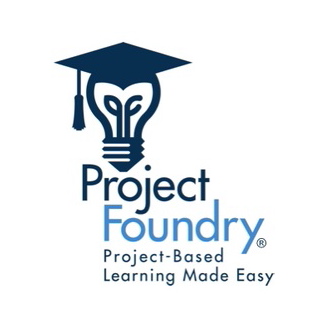I’m an advocate of project based learning (PBL) because students grow when they are actively involved in tasks that give them choices in product, process and evaluation. Throughout my teaching career, I looked for ways to shift responsibility for learning to the the student by designing academic experiences that provoked authentic student reflection. Unfortunately, I often felt like the “system” conspired to make that instructional shift very difficult – and the “forced march to AYP” didn’t make that transition any easier!
Despite the challenges, there are growing numbers of teachers and administrators who want to move to PBL – an approach that values student creativity over test prep. Yet many are still hampered by a system tied to the standard report card /gradebook. After all, even the most innovative educator can get turned off when paperwork gets in the way of teaching and learning.

Recently I heard about
ProjectFoundry, a Milwaukee-based team of educational entrepreneurs who are tackling the task of bringing real-world feasibility to managing PBL. I was new to ProjectFoundry, so I spent some time with their operations manager, Shane Krukowski touring their program via GoToMeeting. Shane and the ProjectFoundry team are veteran teachers with extensive experience in urban schools. It was clear to me that they have a genuine appreciation for the institutional barriers that often hold back student-centered innovations.
I was pleased to see how their ProjectFoundry system simplified the PBL process – from proposal, through project workflow, to product showcasing, and evaluation. ProjectFoundry fostered student engagement with peer evaluation and feedback. All the work products easily flowed into a student portfolio with a variety of formats to export and share with peers and parents. And the folks at central office will be pleased that the entire process can be quickly aligned with state and district standards.
ProjectFoundry has asked me to be the keynote speaker at a summer conference devoted to managing project based leaning and student portfolios. I look forward to the chance to
meet educators from around the country who are having success with ProjectFoundry and those that are looking for ways to more easily manage their PBL process.
ProjectFoundry Summer Conference: July 21-22, 2009
Location: The Tagos Leadership Academy in Janesville, WI.
Audience: ProjectFoundry users and those interested in PBL management
Like this:
Like Loading...
 Recently I heard about ProjectFoundry, a Milwaukee-based team of educational entrepreneurs who are tackling the task of bringing real-world feasibility to managing PBL. I was new to ProjectFoundry, so I spent some time with their operations manager, Shane Krukowski touring their program via GoToMeeting. Shane and the ProjectFoundry team are veteran teachers with extensive experience in urban schools. It was clear to me that they have a genuine appreciation for the institutional barriers that often hold back student-centered innovations.
Recently I heard about ProjectFoundry, a Milwaukee-based team of educational entrepreneurs who are tackling the task of bringing real-world feasibility to managing PBL. I was new to ProjectFoundry, so I spent some time with their operations manager, Shane Krukowski touring their program via GoToMeeting. Shane and the ProjectFoundry team are veteran teachers with extensive experience in urban schools. It was clear to me that they have a genuine appreciation for the institutional barriers that often hold back student-centered innovations.  Recently I heard about ProjectFoundry, a Milwaukee-based team of educational entrepreneurs who are tackling the task of bringing real-world feasibility to managing PBL. I was new to ProjectFoundry, so I spent some time with their operations manager, Shane Krukowski touring their program via GoToMeeting. Shane and the ProjectFoundry team are veteran teachers with extensive experience in urban schools. It was clear to me that they have a genuine appreciation for the institutional barriers that often hold back student-centered innovations.
Recently I heard about ProjectFoundry, a Milwaukee-based team of educational entrepreneurs who are tackling the task of bringing real-world feasibility to managing PBL. I was new to ProjectFoundry, so I spent some time with their operations manager, Shane Krukowski touring their program via GoToMeeting. Shane and the ProjectFoundry team are veteran teachers with extensive experience in urban schools. It was clear to me that they have a genuine appreciation for the institutional barriers that often hold back student-centered innovations. 


